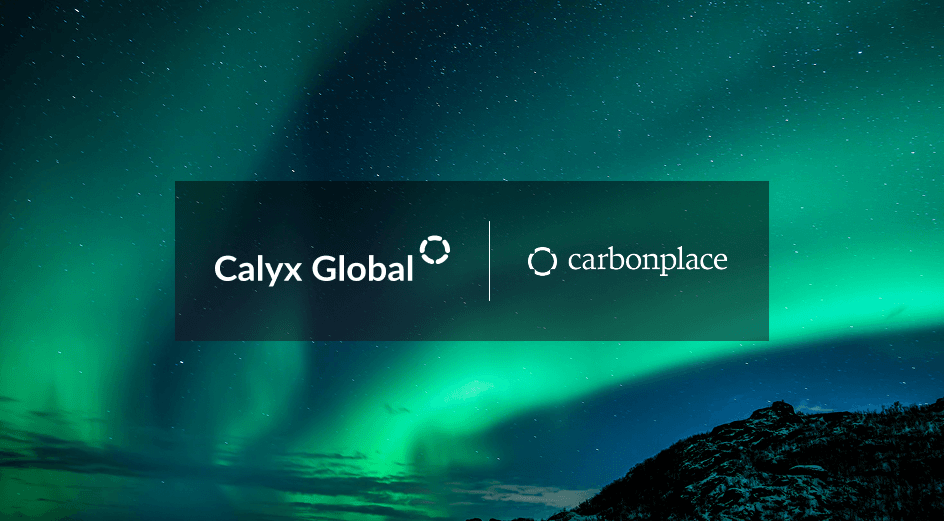
What’s the difference between SBTi, VCMI, ICVCM and the Oxford Principles?
October 14, 2024 - Commentary
The voluntary carbon market (VCM) is made up of a complex ecosystem of guidance bodies, replete with acronyms and abbreviations. This alphabet soup of standards can be confusing for carbon market actors looking to effectively use carbon credits to meet their net-zero goals. This article breaks down some of the most prominent standard setters on both the demand- (those buying carbon credits) and supply- (those selling carbon credits) sides of the VCM. Here we outline some of the challenges for all stakeholders and provide steps for how business leaders can use these guidance bodies to best meet their sustainability targets.
Demand-side guidance
What is the Science Based Target initiative (SBTi)?
SBTi is a non-profit organization that provides companies with net-zero target-setting standards according to “the best available climate science.” If a company applies and follows the SBTI’s Net-Zero Standard, it can become SBTi certified. SBTi certification can signal a company’s serious commitment to climate action – to its customers, investors and other stakeholders. To receive SBTi certification, a company must set emission reduction targets aligned with the United Nations Paris Agreement to keep global temperatures below 2.0 degrees Celsius above pre-industrial levels and ideally below 1.5 degrees Celsius.
The five steps to SBTi certification
SBTi certification requires participants to follow five steps. Applicants must commit, develop, submit, communicate and disclose their science-based targets.
- Commit: Step one of SBTi certification is to submit a publicly available letter of intent.
- Develop: Next, companies must generate emission reduction targets that are in line with SBTi criteria.
- Submit: Companies are then required to deliver their emission reductions targets to SBTi for approval.
- Communicate: Once approved, organizations must disseminate their emission reduction targets through a public announcement to all stakeholders.
- Disclose: SBTi necessitates ongoing annual emission reports, calling for organizations to publicly report their progress toward emission reduction targets.
SBTi’s Corporate Net-Zero Standard
Developed in 2021, the SBTi Corporate Net-Zero Standard is a net-zero target-setting framework. As of October 2024, the Corporate Net-Zero Standard is undergoing revisions according to the Standard Operating Procedure for the Development of SBTi Standards, which requires all SBTi standards to be reviewed every two to five years. Notably, for the VCM, the most recent version of the Corporate Net-Zero Standard includes a third-party assessment of the effectiveness of carbon credits in setting net-zero standards.
What is SBTi’s Beyond Value Chain Management (BVCM)?
BVCM is SBTi’s guidance for companies pursuing emission reductions beyond their internal net-zero targets. BVCM provides opportunities for companies to “do more,” particularly in the near term, and go beyond simply meeting their net-zero target to support mitigation activities outside their supply chain. Actions could include, for example, making pre-purchase agreements from direct air capture projects to bring down the price of carbon dioxide removal carbon credits. Alternatively, a company might build community solar energy projects in developing markets or purchase high-quality carbon credits.
What are the business benefits of BVCM?
SBTi guidance contends that BVCM measures mitigate risk and unlock long-term business opportunities. The benefits of BVCM are especially salient for companies vulnerable to the physical effects of climate change, for whom adaptation and resilience are of utmost importance. For instance, a shipping company has a vested interest in keeping global temperatures low to decrease supply chain exposure to extreme weather events. Meanwhile, clean energy investors can both offset their emissions and sell clean energy tax incentives.
Does SBTi require Scope 3 emission reductions?
SBTi requires companies to set emission reduction targets for Scope 1, Scope 2 and Scope 3 emissions. Scope 1 (sources that are controlled or owned by an organization) and Scope 2 (indirect GHG emissions associated with the purchase of electricity, steam, heat, or cooling) emissions are direct emissions by the company or organization. The Scope 3 designation is related to indirect emissions or those that arise from operations throughout the organization’s supply chain. For example, emissions that arise from employee travel or the carbon footprint of purchased goods and services. As such, targets must include plans for engagement to reduce supplier emissions.
Guidelines for the use of environmental attribute certificates (EACs) and carbon credits by SBTi
The SBTi is currently considering whether to expand its Corporate Net-Zero Standard to allow the use of EACs in meeting a company’s climate target, such as offsetting a portion of its Scope 3 emissions. EACs encompass a number of certificates arising from carbon emission reduction activities, including carbon credits, sustainable aviation fuel certificates and renewable energy certificates. SBTi’s consideration of EACs has been met with mixed opinions. Some VCM actors saw SBTi’s flexibility as providing more room for net-zero engagement. Others worry that expanded EAC usage would slow emission reductions.
What is the Voluntary Carbon Markets Initiative (VCMI)?
VCMI’s mission is to ensure the effective use of high-quality carbon credits in emission reduction efforts and net-zero target setting. The VCMI suggests that its claims can be used to assure stakeholders that a company is engaging in the voluntary carbon market in a credible and transparent manner.
To qualify for VCMI claims, companies must first reduce emissions throughout their supply chain using science-based targets. Only then may companies turn to carbon credits to offset residual emissions. In addition, the credits they use must meet a quality threshold. The guiding document of the VCMI is the Claims Code of Practice (CCP), which outlines the certification process for organizations to meet VCMI criteria.
The VCMI Claims Code of Practice
The foundational criteria of the VCMI Claims Code of Practice require companies to complete four steps before reaching VCMI certification:
- Comply with the Foundational Criteria: Companies must disclose annual greenhouse gas emissions, set near-term science-based emission reduction targets, demonstrate internal efforts to maintain progress towards those targets and advocate for policy supporting the United Nations Paris Agreement.
- Select a VCMI Claim: Step two is to select from one of three available VCMI Carbon Integrity Claims, which call for varying levels of emission reductions before purchasing high-quality carbon credits.
- Meet Carbon Credit Use and Quality Thresholds: Carbon credits used under VCMI must meet Integrity Council for the Voluntary Carbon Market (ICVCM) standards and BVCM criteria.
- Obtain Third-Party Assurances: All information pertaining to Carbon Integrity Claims must be disclosed publicly for third-party assessment.
How do the VCMI Carbon Integrity Claims work?
VCMI offers three levels of claims: the Silver, Gold and Platinum Carbon Integrity Claims. VCMI’s Carbon Integrity Claims are based on the percentage of remaining emissions an organization reduces using high-quality carbon credits after meeting near-term science-based targets.
- Silver: VCMI Carbon Integrity Claims are awarded to organizations that reduce between 10% and 50% of their remaining emission reduction targets with high-quality carbon credits.
- Gold: VCMI Carbon Integrity Claims are awarded to organizations that reduce between 50% and 100% of remaining emission reduction targets with high-quality carbon credits.
- Platinum: Carbon Integrity Claims are reserved for organizations that meet 100% or more of their remaining emission reduction targets with high-quality carbon credits.
How VCMI defines high-quality carbon credits
VCMI requires the carbon credits a company uses to represent mitigation activities happening outside of the company’s own value chain and to be “of the highest quality,” as defined by meeting the Integrity Council for the Voluntary Carbon Market (ICVCM) Core Carbon Principles. Unlike some guideline bodies, VCMI considers the use of avoided emissions and removals carbon credits to be equally valid. When retiring carbon credits, VCMI requires third-party validation and key information to be made publicly available via a website, sustainability report or other means.
To learn more about carbon credit methodologies that have been approved by the ICVCM and would, therefore, meet VCMI requirements, see “ICVCM announces first CCP labels.”
The VCMI Scope 3 Flexibility Claim Beta
VCMI Carbon Integrity Claims include Scope 1, Scope 2 and Scope 3 emissions. To allow a wider on-ramp for more companies to begin their net-zero journey, VCMI implemented the Scope 3 Flexibility Claim Beta. The Scope 3 Flexibility Claim Beta gives corporates the option to meet VCMI Carbon Integrity Claim standards while using high-quality carbon credits to cover 50% or less of their Scope 3 emissions. There are limits on the Scope 3 Flexibility Claim Beta. Corporates are only allowed to use it for 10 years or until 2035, whichever comes first.
What are the Oxford Principles for Net Zero Aligned Carbon Offsetting?
Published in 2020 and 2024, The Oxford Principles for Net Zero Aligned Carbon Offsetting provide a framework for companies to establish net-zero targets. The revised principles recommend companies:
- Reduce emissions before purchasing carbon credits.
- Prioritize carbon removals over offsets as global net zero target dates approach.
- Support innovative strategies and policies to reach global net zero emission targets.
Why were the Oxford Principles for Net Zero Aligned Carbon offsetting revised?
The Oxford Principles for Net Zero Aligned Carbon Offsetting were revised in 2024 to meet an evolving climate landscape. The reasons for the revisions were myriad but included the need to reduce emissions using renewable energy investment. The revised principles acknowledge that carbon removals are essential in a VCM that prioritizes emission reductions and avoidance. Authors also insist that ecosystem restoration and biodiversity targets are essential to a thriving VCM.
A VCM guidance body comparison
| Guidance Body | Who does it apply to? | What should I use it for? | What do I get? | What are the requirements? |
|---|---|---|---|---|
| SBTi | Corporates, small and medium-sized enterprises, financial institutions, sector-specific organizations, cities and regions | Setting science-based net-zero targets, managing emissions beyond internal value chains | SBTi certification according to the Corporate Net-Zero Standard | Commit to the SBTi process. Develop reduction targets. Submit for approval. Communicate with stakeholders. Disclose GHG emissions annually. |
| VCMI | Corporates, carbon credit developers, carbon credit buyers and investors, voluntary market platforms, governments, NGOs | Ensuring the use of credible, high-quality carbon credits in a transparent manner | A Silver, Gold or Platinum Carbon Integrity Claim | Comply with foundational criteria. Select a VCMI claim. Meet carbon credit use and quality thresholds. Obtain third-party assessments. |
| Oxford Principles | Corporates, carbon offset buyers and developers, governments, financial institutions, carbon market standard and certification bodies, NGOs | Designing net-zero commitments in line with the latest considerations for policy and innovation | No certification | Recommendations are to: Reduce emissions before purchasing carbon credits. Prioritize carbon removals. Support innovative decarbonization strategies. |
Supply-side guidance
What is the Integrity Council for the Voluntary Carbon Market (ICVCM)?
While SBTi, VCMI and the Oxford Principles help maintain integrity on the demand side of the VCM, ICVCM is responsible for defining quality for the supply side, i.e., the integrity of carbon credits. This effort ensures carbon credit buyers can make higher-integrity choices and ultimately, the ICVCM hopes its efforts will increase the number of high-quality carbon credits available on the market. ICVCM views carbon credit quality as more than greenhouse gas (GHG) impact alone and adheres to both the Paris Agreement and the United Nations Sustainable Development Goals (SDGs). Alongside carbon credit rating agencies, the ICVCM is widely considered an arbiter of quality, and its positions can impact the value and demand for particular carbon credits.
The ICVCM Core Carbon Principles
The Core Carbon Principles (CCPs) are the standards by which ICVCM assesses the quality of carbon credit projects and their developers. The CCPs cover three categories: governance, emissions impact and sustainable development.
- Governance: To meet governance provisions, carbon crediting programs must prove they meet certain requirements such as having in place effective governance procedures, tracking carbon credit ownership and retirement using a secure registry, making mitigation information publicly accessible and having robust third-party auditing requirements.
- Emissions impact: This specification requires methodologies to have minimum assurances for additionality, permanence, robust quantification and avoidance of double-counting.
- Sustainable impact: This includes a focus on sustainable development benefits, safeguards, and making an overall contribution to a global net zero transition.
The ICVCM Core Carbon Principle label
To help carbon credit buyers more easily identify higher-quality credits, ICVCM created a CCP label. Carbon credits that receive the CCP label must be issued by an approved program and have a methodology that has undergone and passed the emissions impact requirements. While some carbon credit buyers may consider this label a shortcut to quality, analysis of carbon credits eligible for the label has shown a range of integrity. Although CCP label-eligible credits typically perform better in quality assessments than the rest of the VCM, a project-level assessment of quality and risks is required to understand the greenhouse gas integrity and sustainable development benefits of any particular project.
Other supply-side guidance bodies
Multiple other supply-side guidance bodies exist, some specific to certain industries and others related to international agreements such as the Paris Agreement:
- The Carbon Offsetting and Reduction Scheme for International Aviation (CORSIA) is the emission offsetting program established by the International Civil Aviation Organization (ICAO). Aviation emissions fall outside the United Nations Framework Convention on Climate Change and, therefore, receive separate consideration under ICAO.
- The Paris Agreement Crediting Mechanism (PACM) is a carbon crediting scheme established by Article 6 of the Paris Agreement. The mechanism is related to Article 6.4 of the Paris Agreement and facilitates the generation and transfer of carbon credits between countries. PACM is also a source of climate finance for developing nations.
- The Carbon Credit Quality Initiative (CCQI) is a free tool for buyers and traders to score carbon credits based on a number of variables such as the crediting program and methodology. The tool is useful for understanding the risks inherent in carbon methodologies and protocols.
- Carbon credit rating agencies like Calyx Global independently assess carbon credits at the project level to lend confidence and clarity to the VCM.
Challenges with Carbon Credit Guidance Bodies
Speed of Change in the VCM
Some stakeholders find that guidance bodies move frustratingly slowly in clarifying key guidance related to the use and quality of carbon credits. For instance, SBTi’s long-awaited Scope 3 emissions guidance, released in April 2024, was seen as essential to enabling companies to set and act on net-zero targets. SBTi’s guidance, however, has yet to provide details in terms of what percentage of Scope 3 emissions can be offset and which credit types count. Without clear guidance, many companies continue to wait to set net-zero targets.
Lack of clarity in the VCM
The VCM is an ecosystem of actors, with various parties playing different roles on the demand and supply side. This web of standard setters differs from compliance or regulatory schemes, which take a top-down approach. Guidance also can differ depending on a company’s industry. Which guidance body to follow and how they fit together can be confusing. Unfortunately, this complexity sometimes discourages actors from participating in the VCM.
How do I use VCM guidance bodies to decarbonize my business?
So, how can sustainability leaders use this alphabet soup to achieve their net zero goals? Despite how confusing the VCM ecosystem can be, there are some clear steps businesses can take:
- Measure your emissions. One of the most-used measurement standards is the GHG Protocol. This guidance body provides instruction for measuring Scope 1, Scope 2 and Scope 3 emissions
- Set a science-based target. SBTi’s five-step framework provides guidance for companies to set targets and keeps companies accountable to their long-term goals.
- Manage interim emissions. Leaders must also decide how to manage emissions throughout their net-zero journey. Are you going to offset existing emissions or pursue BVCM? Will you take advantage of VCMI’s Claims, including its Scope 3 Flexibility approach?
- Develop a portfolio of carbon credits. The Oxford Principles are useful for deciding the type of portfolio a company may wish to construct – from avoidance to removals, and in what measure. By contrast, the ICVCM and ratings agencies are helpful guides for finding high-quality carbon credits.
Conclusion
While the VCM alphabet soup can be daunting, remember that each of these organizations was created to help guide companies through setting and implementing a climate action plan. SBTi, VCMI and The Oxford Principles keep companies on track for their long-term targets. Organizations like the ICVCM and Calyx Global can help safeguard a company against purchasing low-quality carbon credits. VCM guidance is constantly evolving. To stay up-to-date, check out Calyx Global’s recent posts about the current state of the ICVCM and SBTi.
Keep up with carbon market trends
Get the monthly newsletter and stay in the loop.
Trusted By



About the author
Calyx Global Research Team
Next Up

Ozone depleting substances: unpacking carbon credit integrity under a new methodology
December 15, 2025

Joint statement: Calyx Global, Carbonplace announce partnership to help companies buy high quality carbon credits
December 9, 2025

Joint statement: Calyx Global ratings now available on Emsurge Open Markets trading platform
December 3, 2025